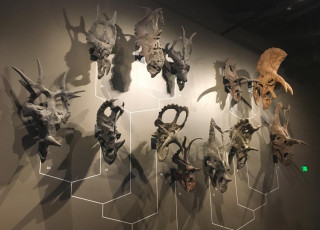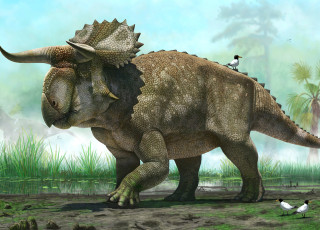Top 5 Dinosaur Myths
By Randall Irmis and Michael Mozdy
1. They’re all dead.
Sure, there was that mass extinction 66 million years ago when a giant asteroid hit the earth, but not everything died. So, which dinosaurs are still alive? Birds! That’s right, birds are dinosaurs. One of several physical characteristics that helps to classify a creature as a dinosaur is that they have a complete hole at the hip socket (versus just a depression). Birds also have this hole, and their lineage that stretches all the way back to the Mesozoic Era. In fact, studies have revealed that T. rex and birds are more closely related than either is to the alligator. Features of the bones tell us birds evolved from meat-eating dinosaurs (called theropods) such as Tyrannosaurus rex, and this has even been confirmed from fossil protein sequences.1 Definitely dinosaurs!
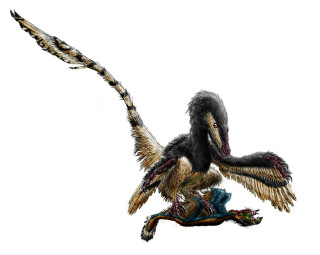
One of the closest non-flying relatives of birds, Velociraptor mongoliensis, restraining a juvenile oviraptorosaur using the "mantling" technique, which has been proposed for these animals and is done by modern birds of prey. Image by Durbed, via Wikimedia Commons.
2. If it ends in “-saurus,” it’s a dino.
“Saurus” comes from ancient Greek and means “lizard” (not dino). So, although Tyrannosaurus means “terrible lizard” and that is a dinosaur, “phytosaur” means “plant lizard,” and those guys weren’t a dinosaur or a crocodile (which it looked like, although it evolved completely separately from alligators and lizards ... and they didn’t even eat plants!). A phytosaur is a reptile, which is the point in the family tree it shares with dinosaurs. Here’s what the lineage looks like:
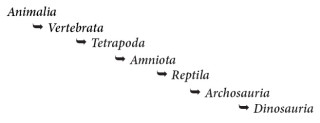
Each of these groups are nested within each other (think Russian dolls), so a dinosaur is also an archosaur, an archosaur is also a reptile, and so on. Therefore, dinosaurs are really a sub-grouping of reptiles. But that doesn’t mean they look like today’s typical reptile, which brings us to
3. All dinosaurs had scales.
Actually, paleontologists now think that many dinosaurs had some form of feathery covering! Skin impressions of dinosaurs and carbonized remains of feathers have shed much more light on what their external coverings looked like, and they were more feathered or downy than we first thought. We know that most meat-eating dinosaurs, and at least some herbivores (ornithischian dinosaurs) were adorned in this way.
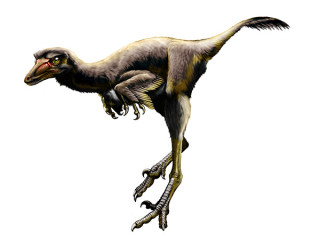
Artist's rendering of the raptor dinosaur, Talos sampsoni, with feathers. © NHMU. Illustrator: Jorge Gonzalez.
4. All dinosaurs were big.
While some were the largest animals ever to have lived on land (we’re talking about you: long-necked, plant-eating sauropods), some were smaller than a housecat. And then there are the tiny living dinosaurs of today, like hummingbirds. Dinosaurs were all sizes.
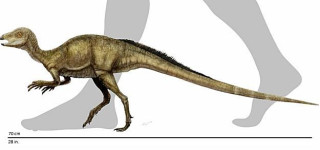
Scale drawing of a genus of dinosaur called Fruitadens (after Fruita, CO, where its bones were found). Image: Jacksonwarrior via Dinopedia
5. Dinosaurs swam in the oceans and flew in the sky.
Nope. Dinosaurs from prehistoric times all lived predominantly on land, although the ones that evolved flight became birds, which are technically dinosaurs. But when we think of the big pterosaurs (“pterodactyls”) flying during the Age of Dinosaurs, realize that these were not dinosaurs, but a different archosaurian reptile (see above). Likewise, ichthyosaurs, plesiosaurs, mosasaurs, and all marine reptiles were not dinosaurs, either. The important point here is that not all prehistoric animals were dinosaurs.
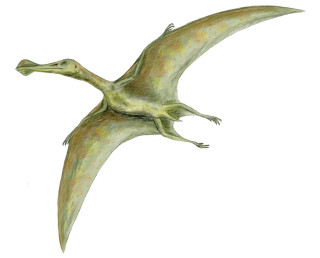
Not a dinosaur! It's Ornithocheirus simus, a pterosaur from the Early Cretaceous. Image by Nobu Tamura via Wikimedia Commons.
If you like dinosaurs and the other animals living alongside them, come visit our Past Worlds gallery at NHMU and peek into our Fossil Preparation Lab where we are actively examining and preparing fossils. There is so much to explore, and we hope to see you soon!
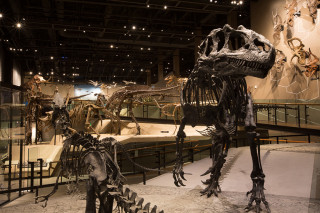
The Past Worlds gallery at the Natural History Museum of Utah. © NHMU.
1 Asara, JM; Schweitzer MH, Freimark LM, Phillips M, Cantley LC (2007). "Protein Sequences from Mastodon and Tyrannosaurus Rex Revealed by Mass Spectrometry". Science. 316 (5822): 280-5. Bibcode:2007Sci...316..280A.doi:10.1126/science.1137614. PMID 17431180
Keep reading! Check out what tools a paletongologist keeps in their field kit, or see our latest paleontology articles on the blog.
Randy Irmis, Ph.D., is the Paleontology Curator and Michael Mozdy is a Digital Science Writer for The Natural History Museum of Utah, a part of the University of Utah in Salt Lake City. Our mission is to illuminate the natural world and the place of humans within it. In addition to housing outstanding exhibits for the public, NHMU is a research museum. Learn more.


